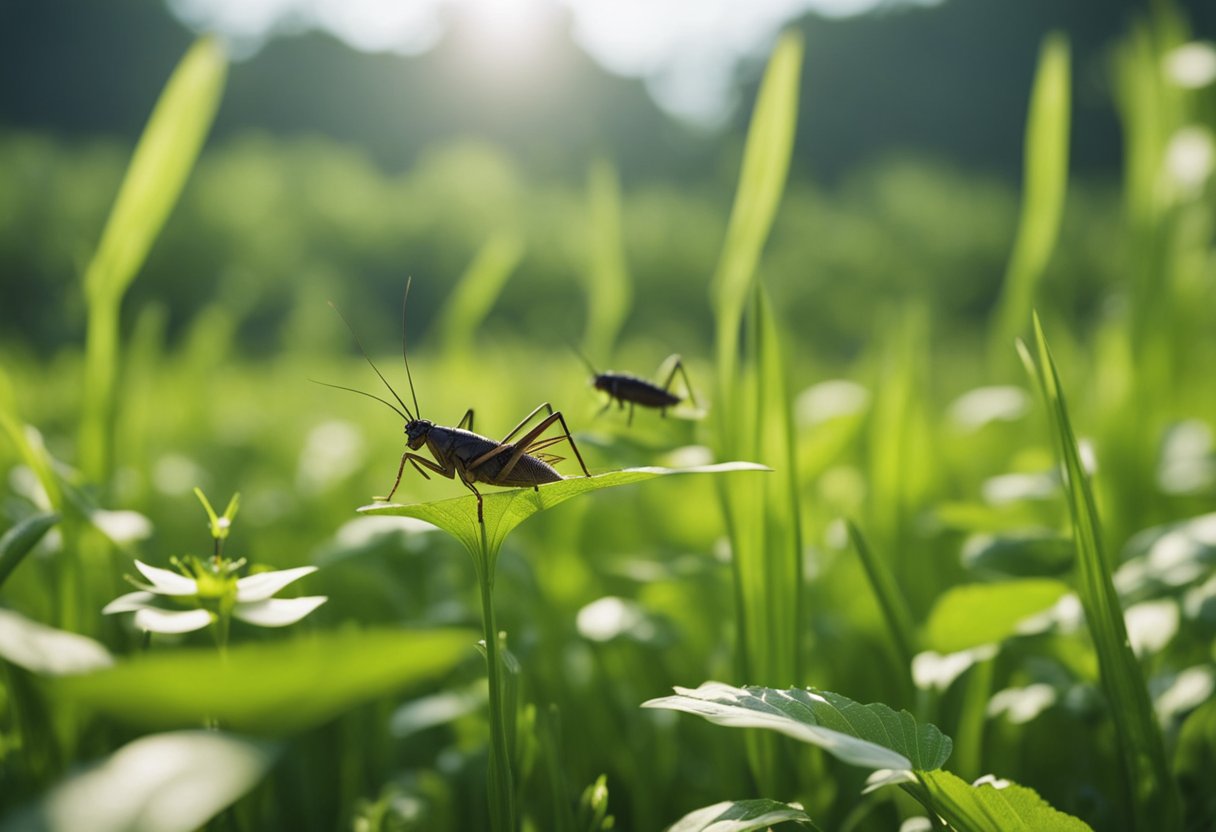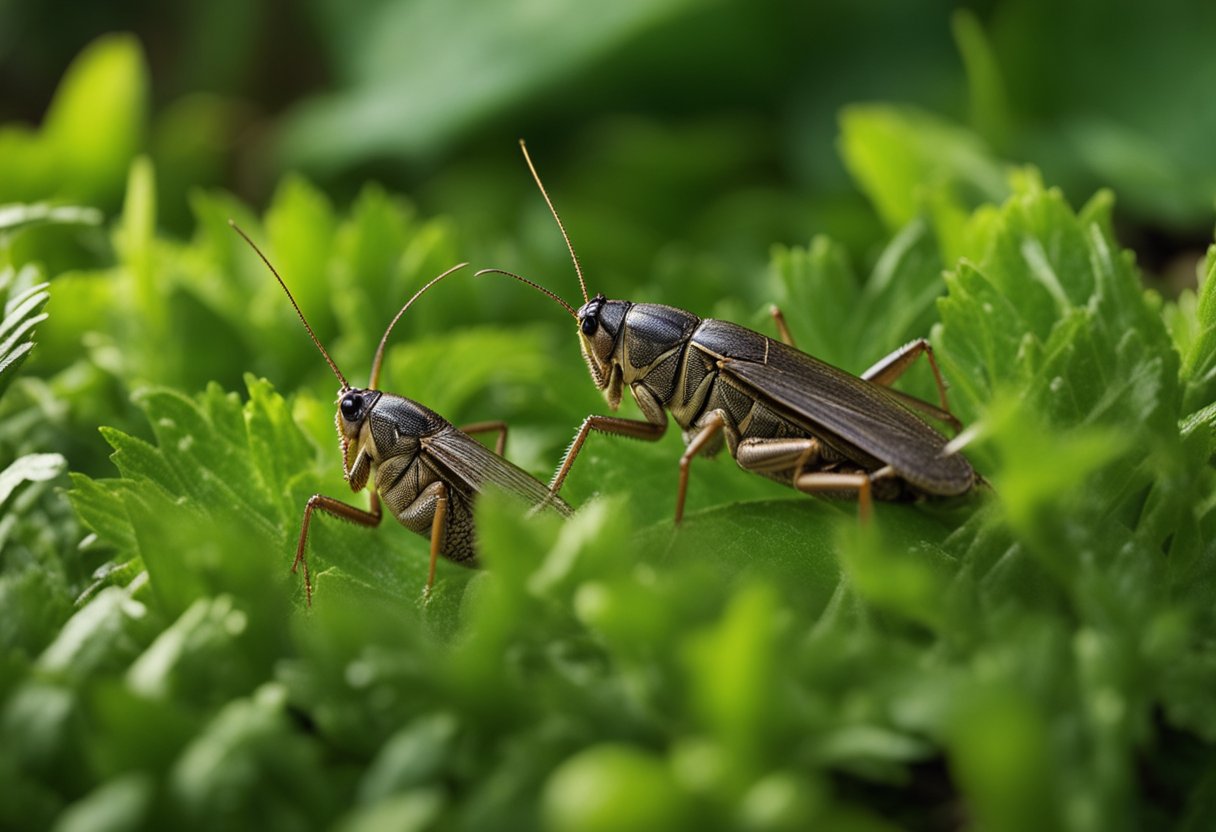Crickets are a familiar sound in the natural world, their chirping a hallmark of warm evenings worldwide. These insects are more than just background noise; they play a significant role in the ecosystem. As both prey and predator, they form a critical link in the food chain. They serve as a food source for a variety of animals, including birds, reptiles, and small mammals, which rely on them for a significant portion of their diets.

Beyond their role in the food web, crickets contribute to the health of the environment in other crucial ways. By consuming plant material and organic debris, they partake in nutrient recycling, which helps maintain soil fertility and the overall balance of the ecosystem. Their presence and diversity also serve as indicators of the environmental health, as different species often thrive in specific habitats.
The impact of crickets extends into the sphere of human interaction with nature. While sometimes regarded as pests, the ecological benefits they provide can outweigh the inconvenience of their presence on human property. Understanding their importance in the environment enables better decision-making when it comes to pest control and ecosystem management, reaffirming the value of these small but significant inhabitants of the natural world.
Crickets in Ecosystem Dynamics
Crickets contribute significantly to ecosystem functionality, specifically through aiding soil health and serving as a crucial link in the food chain. These insects, often unnoticed, are vital for the biogeochemical cycling of key nutrients.
Soil Health and Plant Growth
Crickets are integral to maintaining soil health. By feeding on dead organic matter, they facilitate the decomposition process. This action not only recycles nutrients but also enhances soil structure. Their waste products contribute to the nitrogen content of the soil, which is crucial for plant growth. Additionally, the tunneling behavior of crickets aerates the soil, improving root penetration and water infiltration.
- Organic Matter Recycling: Crickets decompose leaf litter and other organic debris.
- Nitrogen Enrichment: Excreta from crickets increase the nitrogen levels in the soil.
- Soil Aeration: Cricket burrowing introduces air into compact soils.
Food Chain Contributions
As both prey and predator, crickets play a dual role in the food chain. They consume plant materials, small insects, and other arthropods, hence regulating these populations and preventing outbreaks. In turn, crickets are a food source for various animals such as birds, rodents, and other insectivorous species. Their presence and abundance can indicate the health of the ecosystem they inhabit.
- Predation and Population Control: Crickets help control the populations of other small invertebrates.
- Provision of Nutrients: When eaten by predators, they transfer the nutrients and potassium they have gathered to the higher trophic levels.
Crickets and Biodiversity
Crickets play a crucial role in maintaining biodiversity by participating in intricate species interactions and impacting their natural habitats through their presence and activities.
Species Interaction and Balance
In tropical ecosystems, crickets are a fundamental component due to their extensive interactions with both flora and fauna. They contribute to species richness by fulfilling various ecological roles such as pollinators, herbivores, and prey. For example, some cricket species are known to assist in plant pollination, aiding in the reproduction of a variety of plant species. Their presence is essential for the balance of food webs, as crickets themselves are a food source for a multitude of predators, including birds and reptiles.
Impact on Natural Habitat
Crickets affect the habitat they live in by influencing nutrient cycles and soil health. Their feeding habits contribute to the decomposition of plant material, thereby enhancing soil fertility and structure. This activity assists in creating a more hospitable environment for other species to thrive. In tropical regions, crickets’ varied diet and their role as decomposers make them vital for sustaining the intricate and diverse ecosystems characteristic of these areas.
Cricket Behavior and Ecology
Crickets exhibit intricate behaviors and ecology, notably in their reproductive processes and communication. These are vital for their survival and play a significant role in the ecosystems where they thrive.
Reproductive Processes
The mating procedure in crickets is an essential behavior that ensures the continuation of the species. Male crickets attract females through a process known as stridulation, where they rub their wings together to produce a chirping sound. This acoustic communication is not just a mating call but also serves to deter rival males. Different cricket species have distinct chirping “songs” designed for specific purposes such as attracting females or asserting territory.
Communication Mechanisms
Crickets rely heavily on acoustic communication. The characteristic chirping of crickets is a complex mechanism primarily used for mating and signaling territory. Male crickets produce a variety of chirps:
- Calling chirp: Loud and sustained, to attract females from a distance.
- Courting chirp: Quieter and produced when a female is near.
- Aggressive chirp: Used when encountering other males.
This form of communication demonstrates a high level of adaptation and complexity within cricket behavior, directly influencing their reproductive success and interactions with other organisms within their environment.
Environmental Challenges and Cricket Adaptation
The relationship between crickets and their changing environment hinges on the effects of climate change and the insects’ capacity for adaptation. As indicators of ecosystem health, crickets’ responses to environmental stressors offer insights into broader ecological impacts.
Effects of Climate Change
Climate change has profound effects on insect populations, altering temperature regimes and the availability of resources. Crickets, as ectotherms, are particularly sensitive to temperature changes, which can affect their growth, reproduction, and survival rates. Increased temperatures may lead to a shift in cricket behavior and life cycle timing, posing challenges to their traditional roles in ecosystems.
- Rising Temperatures: Higher temperatures can accelerate cricket metabolism, necessitating increased food intake.
- Changing Precipitation Patterns: Altered rain patterns can impact cricket habitats, sometimes leading to scarcity of food and shelter.
Crickets’ Adaptive Strategies
Crickets exhibit a range of adaptive strategies that enable them to survive in the face of environmental challenges. Evolution plays a central role in these adaptations, with natural selection favoring traits that confer survival advantages.
- Behavioral Adjustments: Crickets may alter their activity patterns, seeking shelter during extreme heat or adjusting their mating and foraging behavior.
- Physiological Changes: Some cricket species develop a tolerance to higher temperatures over generations through selection.
- Camouflage: Changes in habitat might lead to altered physical characteristics for better camouflage and protection from predators.
Crickets’ adaptability highlights the intricate balance of ecosystems and showcases the necessity of studying and supporting these organisms as climate change continues to reshape environments.
The Significance of Crickets in Human Culture and Sustenance

In diverse cultures and ecosystems, crickets hold a unique place not only as a food source rich in protein but also as entities deeply rooted in myth and tradition.
Crickets as a Food Source
Cricket products, especially cricket powder, have emerged as a sustainable alternative to conventional protein sources. With the rising concerns of food security, the inclusion of edible insects like crickets into diets presents a viable solution. They require less water, feed, and space to produce the same amount of protein as livestock, aligning with global efforts to sustain an ever-growing population.
- Protein content: Cricket-based food items are high in nutritious protein and low in fats.
- Environmental benefits: Farming crickets produce fewer greenhouse gases, conservation of resources.
Cultural and Mythological Roles
Throughout history, crickets have been more than just insects. They have played a role in cultural beliefs and myths.
- In some cultures, crickets are seen as bringers of good fortune and protectors of the home.
- Myths often regard them as symbols of intuition and sensitivity to changes, akin to the canaries used in coal mines for detecting toxic gases.
This profound connection showcases crickets’ place not only at the ecological table but also in the storied tapestry of human culture.

